Going gluten-free has generated a lot of attention, with everyone from celebrities to professional athletes promoting the benefits of a gluten-free diet. Eating gluten-free has benefits in the appropriate situations, such as for those diagnosed with celiac disease, but unnecessarily cutting out substantial amounts of food can lead to other issues such as nutrient deficiencies and a negative relationship with food. So, our intent today is to provide some basic information on a gluten-free diet to act as a starting point in your research to determine whether this is an appropriate diet for you. Speaking with your doctor about your unique health needs should always be a part of the decision-making process.
What is a Gluten-Free Diet?
A gluten-free diet is one that eliminates any foods containing gluten. Gluten is a protein that may be found in wheat, barley, rye, and triticale, among other grains (a cross between wheat and rye). It entails consuming naturally gluten-free whole foods such as fruits, vegetables, meat, and eggs, as well as processed gluten-free products such as gluten-free bread and pasta.
Knowing where to start with a gluten-free diet can be daunting as it is not always clear what contains gluten and what doesn’t. Gluten is a protein found naturally in some meals, but it may also be added to foods during processing to create texture. Gluten may be employed as a binding agent and taste enhancer, so you could encounter it in unexpected places(Saturni, et al., 2010). Gluten may be found in anything from soy sauce and ice cream to some pharmaceuticals, cosmetic products, and dietary supplements, in addition to meals like pizza, pasta, cereal, and baked goods (J, F. P. G. D. N., n.d.). Some individuals mistakenly believe that being gluten-free implies avoiding carbs. This is not the case. Many carbohydrate-rich foods, such as rice, potatoes, and beans, are gluten-free.
Who Needs to Adhere to a Gluten-Free Diet?
A gluten-free diet is necessary for controlling the signs and symptoms of celiac disease and other gluten-related medical problems. People who have received a diagnosis of one of these illnesses are often advised by their doctor to adhere to a gluten-free diet.
- Celiac disease is a disorder in which gluten activates the immune system, causing damage to the small intestinal lining. Over time, this damage inhibits nutrients from being absorbed from meals. Celiac disease is an autoimmune illness that affects the small intestine. (Journal of the American College of Cardiology, 2017)
- Even though there is no damage to the tissues of the small intestine, non-celiac gluten sensitivity causes some of the same signs and symptoms as celiac diseases, such as stomach discomfort, bloating, diarrhea, constipation, “foggy brain,” rash, or headache. The immune system appears to have a role, according to studies, although the mechanism is not fully understood. (Current Gastroenterology Reports, 2017)
- Gluten ataxia is an autoimmune condition that affects particular nerve tissues, causing muscle control and voluntary muscle movement disorders.
- Wheat allergy, like other food allergies, is caused by the immune system mistaking gluten or another protein contained in wheat for a disease-causing factor like a virus or bacteria. The immune system produces an antibody against the protein, which triggers an immunological reaction that can cause congestion, breathing problems, and other symptoms. (Academy of Nutrition and Dietetics, 2019)
Celiac disease patients must follow a gluten-free diet for the rest of their lives. The disease’s symptoms and effects are reduced when the diet is followed, and cross-contamination is avoided.
Gluten sensitivity that isn’t caused by celiac disease may not be permanent in some people. According to some studies, you can follow the diet for a certain length of time, such as one or two years, and then retest your gluten sensitivity. Other persons with non-celiac gluten sensitivity may need to follow a gluten-free diet for the rest of their lives. (Asian Pacific Journal of Cancer Prevention, 2018)
Over the past several years, people who haven’t been diagnosed with a gluten-related medical ailment are also adopting a gluten-free diet. Proponents of this believe that removing gluten from your diet can lead to improved health, weight loss, and higher vitality are all stated advantages of the diet, but further study is needed and there are very conflicting opinions on this (United European Gastroenterology, 2015). It is strongly recommended you speak with your doctor before adopting a gluten-free diet if you have not been medically recommended to do so.
How to Eat Gluten-Free?
Availability of gluten-free options has been on the rise over the past several years, which has made the diet much more accessible for those who need to follow it. Though, it can be daunting learning how to eat gluten-free in the beginning, so we are providing some basic tips to get you started.
Read Labels
While some foods are more obvious in their gluten content, others have it hidden within.
Many foods include gluten-containing substances, therefore people who are unable to ingest it should carefully read ingredient labels and become familiar with all the different words used to describe gluten.
Whole Grains
Only a few whole grains contain gluten, whereas the remainder are gluten-free by nature. When buying whole grains, it’s crucial to read the labelling. Gluten can be found in gluten-free whole grains, especially if they are processed in the same facility as gluten-containing foods.
Oats, for example, are frequently processed in the same facilities as wheat, which might result in cross-contamination. As a result, you should double-check that the oats you buy are gluten-free (Saturni, et al., 2010).
Grains to stay away from
- All types of wheat (whole wheat, wheat berries, graham, bulgur, farro, farina, durum, Kamut, bromated flour, spelt, etc.)
- Rye
- Barley
- Triticale
Fruits and Vegetables
Gluten is naturally absent from all fresh fruits and vegetables. Gluten, which is occasionally added for flavour or as a thickening, may be present in some processed fruits and vegetables.
Hydrolyzed wheat protein, modified food starch, malt, and maltodextrin are all gluten-containing substances that may be added to processed fruits and vegetables.
Double-check your fruits and veggies
- Fruits and vegetables in cans: These may have been canned with gluten-containing sauces. Gluten-free fruits and vegetables that have been canned in water or natural juices are most likely gluten-free.
- Frozen fruits and vegetables: These may include gluten-containing flavourings and sauces. Frozen plain variations are usually gluten-free.
- Gluten-containing components may be present in some dried fruits and vegetables. Gluten-free dried fruits and vegetables are usually plain and unsweetened.
- Pre-chopped fruits and vegetables: Depending on how they were prepared, they may be cross contaminated with gluten. (Saturni, et al., 2010)
Proteins
Protein may be found in a variety of diets, both animal and plant based. Most of them are naturally gluten-free.
Gluten-containing substances like soy sauce, wheat, and malt vinegar, on the other hand, are frequently employed as fillers or flavourings. Sauces, rubs, and marinades that are typically coupled with protein sources can all benefit from them.
Proteins that should be double-checked
- Meat replacements, such as vegetarian burgers
- Processed meats, such as hot dogs, pepperoni, sausage, salami, and bacon
- Ready-to-eat proteins, such as those found in microwaveable TV meals,
- Lunch meats or cold cuts ground meats proteins that have been blended with sauces or spices (Saturni, et al., 2010)
Products derived from milk
The majority of dairy products are gluten-free by nature. Those that are flavoured or include additives, on the other hand, should always be double-checked for gluten (Saturni, et al., 2010).
Thickeners, malt, and modified food starch are all frequent gluten-containing components found in dairy products.
Double-check dairy products
- yoghurts and flavoured milks
- ice cream, which is occasionally combined with gluten-containing ingredients,
- processed cheese goods, such as cheese sauces and spreads
Oils and fats
Fats and oils are gluten-free by nature. Gluten-containing additives may be used with fats and oils for taste and thickening in some circumstances (J, F. P. G. D. N., n.d.)
Fats and oils that are gluten-free
- vegetable and seed oils, such as sesame oil, canola oil, and sunflower oil
- butter and ghee
- olives and olive oil
- avocados and avocado oil
- coconut oil
- sesame oil, canola oil, and sunflower oil
Beverages
There are a variety of gluten-free beverages to choose from. However, some beverages include gluten-containing ingredients. Furthermore, several alcoholic drinks are manufactured with gluten-containing grains such as malt, barley, and other grains, and should be avoided on a gluten-free diet.
Drinks that are gluten-free
- 100% fruit juice and water
- Coffee
- Tea
- Alcoholic beverages such as wine, hard ciders, and beer manufactured from gluten-free grains such buckwheat or sorghum
- Sports drinks, soda, and energy drinks lemonade
In a nutshell, double-checking ingredient labels is crucial to a gluten-free diet’s success, as gluten is frequently introduced to goods you wouldn’t anticipate. Gluten-containing foods will be clearly labelled.
However, sticking to a gluten-free diet can feel manageable if you focus on eating largely fresh, whole, gluten-free meals with a little quantity of processed items.
We hope this helped give you a basic understanding of eating gluten-free.
We hope you liked out latest Health Hint!
Written by An Lin Chen
Related Articles
Health Hint! – Basics of Calories & Nutrients
Health Hint: What are Nutrients?
References:
Saturni, L., Ferretti, G., & Bacchetti, T. (2010, January). The gluten-free diet: Safety and Nutritional Quality. Nutrients. Retrieved November 21, 2021, from https://www.ncbi.nlm.nih.gov/pmc/articles/PMC3257612/.
J;, F. P. G. D. N. (n.d.). Celiac disease, gluten-free diet, and oats. Nutrition reviews. Retrieved November 21, 2021, from https://pubmed.ncbi.nlm.nih.gov/21294744/.
Ciacci C, et al. The gluten-free diet and its current application in coeliac disease and dermatitis herpetiformis. United European Gastroenterology. 2015; doi:10.11772050640614559263.
Freeman AM, et al. Trending cardiovascular nutrition controversies. Journal of the Americal College of Cardiology. 2017; doi:10.1016/j.jacc.2016.10.086.
Newberry C, et al. Going gluten free: The history and nutritional implications of today’s most popular diet. Current Gastroenterology Reports. 2017; doi:10.1007/s11894-017-0597-2.
Gluten-free diet. Nutrition Care Manual. Academy of Nutrition and Dietetics. https://www.nutritioncaremanual.org. Accessed Nov. 3, 2019.
Ehteshami M, et al. The effect of gluten free diet on components of metabolic syndrome: A randomized clinical trial. Asian Pacific Journal of Cancer Prevention. 2018; doi:10.22034/APJCP.2018.19.10.2979.






